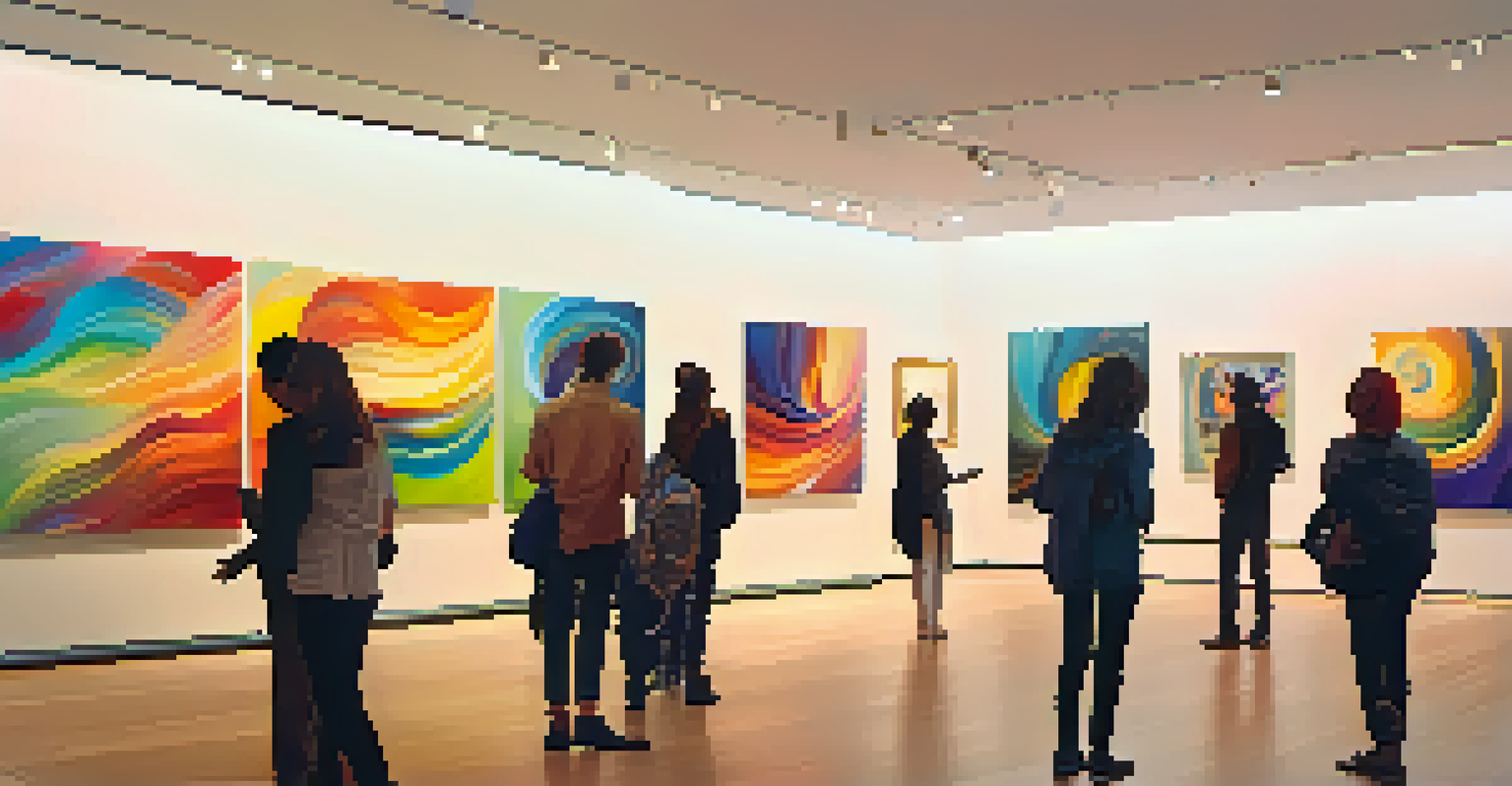Perception and Emotion: How Sound Affects Visual Perception

Understanding the Connection Between Sound and Vision
Our senses are deeply interconnected, and sound plays a significant role in shaping our visual experiences. When we hear a sound, it can trigger memories or emotions that alter how we perceive what we see. For instance, a soothing melody can enhance the beauty of a sunset, while a jarring noise might overshadow it.
Music can change the world because it can change people.
This interplay is more than just an artistic notion; it's grounded in science. Researchers have found that auditory stimuli can influence visual attention, meaning that what we hear can direct our eyes to focus on certain aspects of a visual scene. This connection highlights the importance of sound in our everyday experiences.
Think of a movie scene: the background music sets the mood and influences how we interpret the visuals. A suspenseful score can make us more alert to visual details, while soft music can encourage a relaxed viewing experience, emphasizing how sound and vision work hand in hand.
The Role of Emotion in Perception
Emotions significantly affect how we perceive the world around us, and sound plays a crucial role in this process. A piece of music can evoke feelings of happiness, sadness, or nostalgia, which in turn influences our visual perception. For example, a bright, cheerful song can make colors seem more vibrant and lively.

Conversely, sounds associated with negative emotions, like a loud crash or a siren, can distort our visual perception, making us more anxious or fearful. This emotional lens through which we view the world can lead us to interpret visual cues differently based on our current feelings.
Sound Shapes Visual Experiences
Our sensory experiences are deeply interconnected, with sound influencing how we perceive and interpret visual stimuli.
Imagine walking into an art gallery with upbeat music playing; you might find yourself appreciating the artwork more and feeling a sense of joy. Now, replace that music with a somber tone, and your reaction to the same pieces might shift dramatically, demonstrating how intertwined emotion and perception truly are.
Soundscapes and Their Influence on Visual Experiences
Soundscapes, or the ambient sounds of an environment, can greatly enhance or alter visual perception. For instance, the gentle rustling of leaves can make a forest scene more immersive, while the hum of city traffic might distract from the beauty of a skyline. This phenomenon illustrates how our surroundings shape our visual experiences.
The ear does not listen just to the sound; it listens to the meaning of the sound.
Moreover, soundscapes can evoke specific emotional responses, impacting how we interact with visual stimuli. A tranquil beach soundscape can make the colors of the ocean appear more inviting, while the chaotic sounds of a busy street might dull the vibrancy of a sunset.
When we consider the importance of soundscapes, it becomes clear that they contribute to the overall atmosphere, enhancing our connection to the visual elements. This relationship shows us that sound is not just a background element but an integral part of our sensory experience.
Cultural Differences in Sound and Visual Perception
Cultural background can significantly influence how sound affects visual perception. Different cultures have unique associations with certain sounds, which can lead to varying emotional responses and visual interpretations. For example, the sound of a drum may evoke feelings of celebration in one culture while being associated with mourning in another.
These cultural nuances shape our perceptions and can even alter how we experience art, film, and nature. A piece of art may resonate deeply with one viewer due to its accompanying sound, while another may feel disconnected due to cultural differences in sound associations.
Emotions Color Our Perception
The emotions evoked by sound significantly affect our visual perception, altering how we interpret colors and visual cues.
Understanding these cultural variations helps us appreciate the diversity of human experience. It reminds us that perception is not a universal experience; it is colored by individual backgrounds and societal influences.
The Science Behind Sound and Visual Perception
Various studies have explored the scientific basis for how sound influences visual perception. Neuroscience has shown that our brain integrates sensory information from multiple sources, including sound and sight, to create a cohesive understanding of our environment. This integration is crucial for our survival and enhances our overall sensory experience.
For instance, the McGurk effect demonstrates how auditory and visual information can interact to create a different perception than either sense alone. When we see a person speaking but hear different sounds, our brain can blend these inputs, leading us to perceive something entirely different.
This fascinating interplay underscores the complexity of our sensory systems and their ability to influence each other. It highlights the importance of considering sound when examining visual perception, as they are not separate entities but rather parts of a greater whole.
Practical Applications of Sound in Enhancing Visual Perception
Understanding the connection between sound and visual perception opens up exciting opportunities for various fields. In marketing, for instance, brands use sound strategically to enhance visual advertising, creating an emotional resonance that can lead to stronger consumer engagement. A catchy jingle can make a product more memorable, reinforcing the visual message.
In the realm of virtual and augmented reality, sound design is crucial for creating immersive experiences. Developers know that well-designed soundscapes can significantly enhance the user's experience, making virtual environments feel more real and engaging. This is especially important in gaming, where auditory cues can guide players' visual focus.
Cultural Influences on Perception
Cultural backgrounds can shape the emotional responses to sound, leading to different interpretations of visual experiences across diverse cultures.
By leveraging sound effectively, creators can craft experiences that resonate emotionally and visually with their audience. This understanding of sound's role in perception is a powerful tool in enhancing communication and engagement across various platforms.
Future Research Directions in Sound and Visual Perception
As our understanding of the connection between sound and visual perception continues to grow, so do the possibilities for future research. Scientists are exploring how different frequencies and types of sounds affect visual processing, aiming to uncover more about this intricate relationship. This research could have implications for fields like education, therapy, and entertainment.
Another exciting avenue of exploration is the impact of technology on this relationship. With advancements in audio technology like 3D sound and spatial audio, researchers can study how these innovations influence our visual experiences. This could lead to breakthroughs in virtual reality, gaming, and even therapeutic settings.

Ultimately, continued research in this area will deepen our understanding of human perception and open up new ways to enhance our sensory experiences. As we uncover more about the ways sound shapes how we see the world, we can apply these insights to create richer, more engaging environments for everyone.